Lapland Wildlife
When you think of Lapland, you probably think of magical snowy landscapes. But did you know that Finland has some pretty amazing animals as well?
In Lapland, the wild is closer to you than you might think!
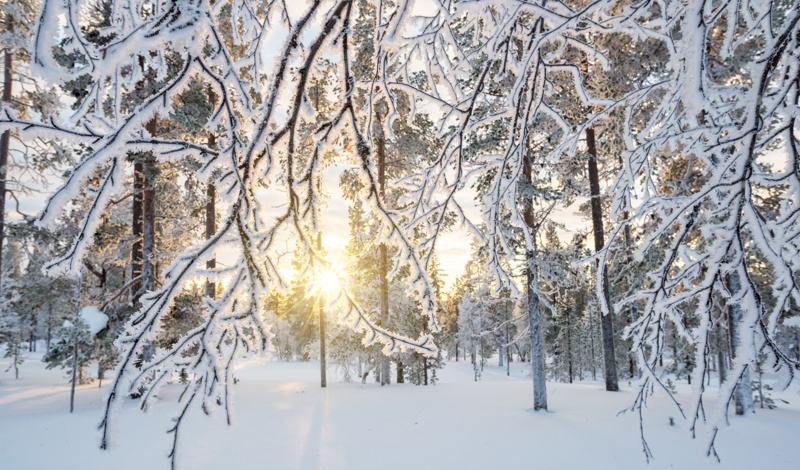
Throughout the winter, Lapland is home to a number of cold-loving animals, including Arctic foxes, huskies, and of course, whole herds of reindeer.
If you want to know what kinds of animals you might see, in between your search for Santa, then this guide to arctic wildlife in Lapland will be just what you need.
Reindeer
Reindeer are everywhere in Lapland. These majestic and furry creatures are probably the most famous (and most loved) animal in Finland. Some of Santa’s best friends are his trusty Reindeer but there are lots more hiding in the forests of Saariselkä!
You can spot them by their large antlers, shaggy coats and cloven hooves. You’ll see them around the forests of Saariselkä every single day as they make their way through the snow.
You’ll see them grazing on everything green. They especially love lichen, even if it means digging underground in the winter or eating moss off trees.
Both our Santa's Magic and Santa's Aurora packages include Reindeer rides, but as one of the most peaceful way to get around, why not book Rudolph's Reindeer Ride where your Sami guide will also tell you tales of their history with the reindeer.
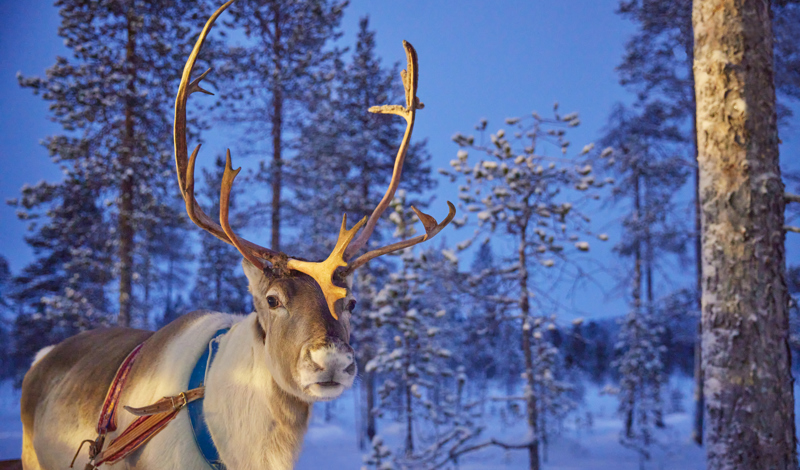
Did You Know? Fun Reindeer Facts
Running wild and free
Reindeer were originally a wild animal that the Sámi People started to domesticate about 1,000 years ago.
Reindeer calves
Reindeer calves are born between April and early May and their weight at birth is around 5kg. During the summer, the reindeer owners get together to mark the calves.
There’s lots of reindeer in Lapland
The total number of reindeer in the wintertime exceeds 200,000 heads and, during the summer, about 150,000 calves are born.
Each owner has his own unique mark, which is put inside the reindeer’s ear. There are over 16,000 different marks in Finland. In the autumn, the mating season starts and the dominant male reindeer gathers a large harem.
Run reindeer run!
Reindeer can run at a speed of 70km per hour but they cannot maintain this speed for long. Some compete in reindeer race competitions.
They shed their antlers for new ones
In December, some of the reindeer will be shedding their antlers leaving stumps. This is a natural yearly process and any concerned children should be reassured that it is completely normal. As reindeer
Farm raised reindeer are curious and friendly
Reindeer are generally good-natured but they are semi-wild working animals. They can be alarmed or unnerved by strangers or by children’s natural exuberance. We therefore highly recommend that you or your children do not approach the reindeer or attempt to pet them.
Wolverines
The wolverine is the largest member of the weasel family and resembles a small bear. Take care, these feisty guys are not to be played with!
These tough animals are solitary, and they need a lot of room to roam. Individual wolverines may travel 15 miles in a day in search of food!
Wolverines aren't picky eaters when it comes to what they eat. They are omnivores which means they will eat anything from rabbits and rodents to plants and berries.
This Lapland animal is well known for its ability to move in conditions that most animals could not even begin to survive in. The Wolverine moves across snow-covered banks and ice, making it the perfect animal for surviving out in the deep forests of Saariselkä.
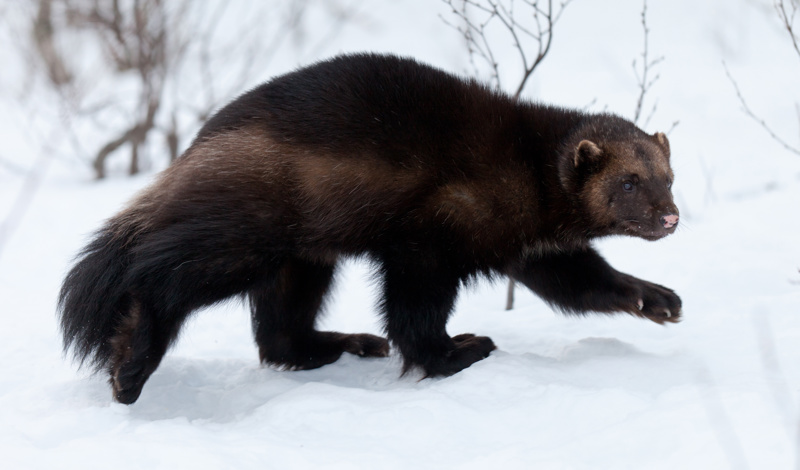
Did You Know? Fun Wolverine Facts
They roam far
They can travel up to 40 miles per day! Their tracks are surprisingly large, with their footprints resembling those of a small bear.
They have large paws!
Their large paws help them move through Lapland’s snow. You’ll often see their tracks in pairs or groups of three.
Their babies are called kits.
These baby wolverine’s are born with white fur and are raised by the female.
Brown Bears
The brown bear is the most common of the big omnivores in Lapland. They are also the fuzziest. They love berries, mushrooms and bugs, but also other woodland creatures. They hunt at night and hibernate in winter.
Lapland bears are furry, strong and fearsome. But don't let their size fool you - they're more afraid of you than you are of them! They are solitary creatures, but may be seen coming out of caves to hunt or scavenge at night.
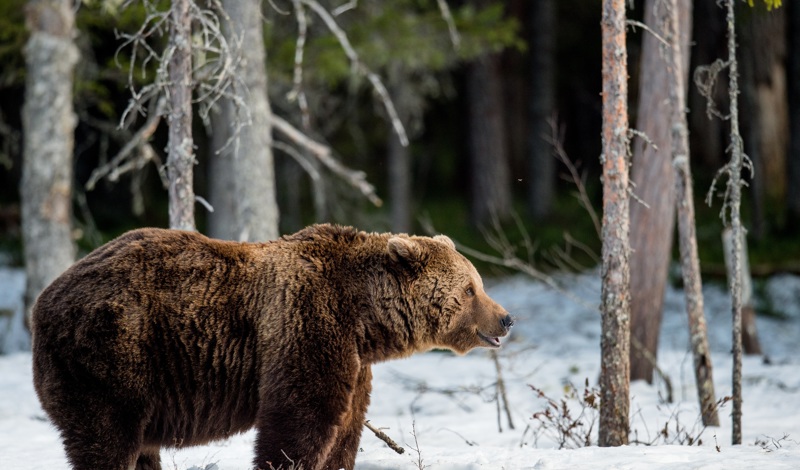
Did You Know? Fun Bear Facts
Finland is home to more than 1,500 bears
That’s a lot of bears! However, they are seldom seen and are very shy of people.
The Finns have over 200 different names for the brown bear
Some of the most well-known are nalle, otso and mesikämmen, but fewer people are aware that common words such as mettä, metsä (forest) and otava (swamp) are also ancient synonyms for bear.
You can’t miss their tracks
The largest tracks of all of Finland's native species are found in the paws of a bear. A bear's hindpaw is slightly similar to a human's footprint. In summer, bears might leave behind destroyed anthills or tree stumps. Their winter dens are very difficult to find.
They like to sleep in winter
Bears hibernate when snow is on the ground, retreating into their winter dens between September and March. They wake up again in March–May.
Golden Eagles
Another wonder of nature you can encounter during your visit to Lapland is the golden eagle. With big, powerful wings, the golden eagle can soar high above the trees and take flight at will. Its sharp vision allows it to spot prey from miles away. The eagle is a tough bird—it can fend for itself in its natural environment, where food is plentiful and predators are few.
It may not be the symbol of Christmas in Lapland, but it's a living symbol of power and freedom the world over.
Did You Know? Fun Golden Eagle Facts
How long is a golden eagle’s wingspan?
They are one of Finland's largest bird species: their wingspan is almost two metres.
How many Golden Eagles are there in Finland?
It is estimated that there are currently 330–460 pairs of Golden Eagle breeding in Finland.In the wild, they have been known to live up to 32 years old.
They nest up high
The golden eagle has several nests in its territory, and each year it selects the one that is most suitable for breeding. The nest is a huge structure, up to two metres wide and three metres high.
What do Golden Eagles like to eat?
They like to eat fish, rabbits, foxes and other birds. But they are also strong enough to hunt down large animals such as deer!
Golden Eagles mate for life
Golden eagles partner up for life and both parents take care of their young until they are old enough to fly the nest
Huskies
Huskies are beautiful dogs with wolf-like looks and beautiful blue or brown eyes. They're intelligent, fun-loving, and can be shy at first but once they get to know you they're your best friend.
Though often kept as pets today, huskies have been used to pull sleds in northern regions of the world for hundreds of years – the perfect transport for your ‘Search for Santa’ day in Lapland.
Husky dog sledding is a thrilling and memorable way to take in the Scandinavian Arctic wilderness. If you are interested in animal or dog-focused activities, this will be an especially exciting way to spend a day in Lapland.
Both our Santa's Magic and Santa's Aurora packages include Husky experiences, but you can spend more time with these incredible animals with our Husky Rides.
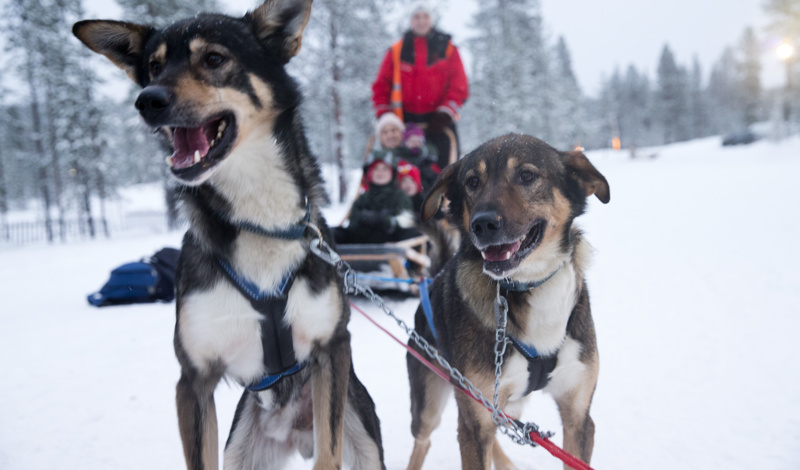
Did You Know? Fun Husky Facts
What kind of dog is a husky?
The term ‘husky’ is used to describe a group of sled dogs used in northern regions. They are not a specific breed of dog, but an ever-evolving cross-breed of the fastest dogs, meaning that they don’t necessarily look like a specific breed of dog, but a mixture of many!
The Alaskan Husky is essentially a cross between northern village Huskies, Siberian Huskies, a dash of Border Collie or German Shepherd, maybe some Inuit sled dog, or a bit of hound for speed. They are stronger and faster than their Siberian cousins.
The husky is a pack dog
Huskies need to have a clear pack leader, and training must start from an early age to ensure that it is well-behaved.
They love pulling sleds
In Finnish Lapland, huskies that pull sleds are likely to be kept on farms that can accommodate anywhere from 40 to 400 dogs.
Husky training begins at the age of 6-7 months, with full-time training from 24 months.
The dogs nearest to the sleigh are the strongest ones and are called wheel dogs. The strongest dogs drive the sleigh with the young dogs in the middle of the team.
Despite their thick fur, they are susceptible to frostbite
You may not know that even though they are hardy, robust dogs that are resilient to the cold, they are still susceptible to frostbite in the winter.
Eurasian Lynx
The Eurasian lynx is an endearing furry creature with an enormous appetite. It thrives in open country, but it’s also capable of living in forests as well. This big cat feeds mainly on reindeer, rabbits and rodents.
Lynx cats have large paws with sharp claws used for climbing trees and scrambling through undergrowth. Their toes are also adapted for grasping which enables them to pull themselves up onto treetops or tree branches by hooking their claws into cracks in rocks or tree bark.
They are solitary creatures, and typically loners so count yourself lucky if you see one on one of your Lapland adventures!
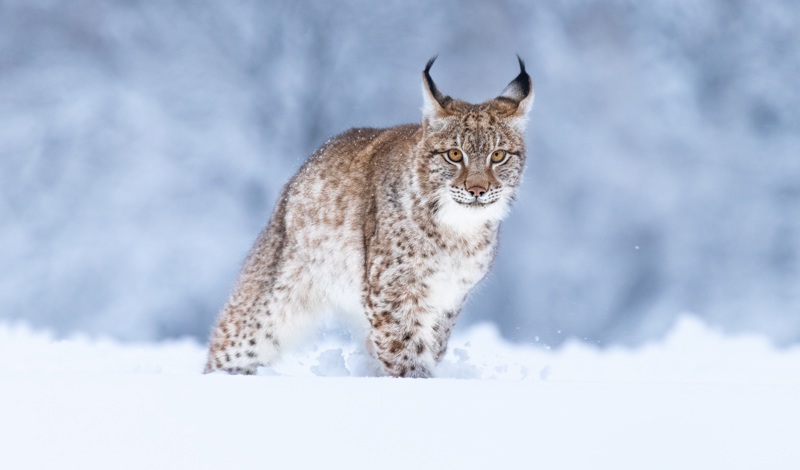
Did You Know? Fun Lynx Facts
They are fierce predators
Eurasian lynx are the largest of the four lynx species and are one of the largest predators in Europe. They can survive up to 17 years in the wild!
They cover a lot of ground
They have huge territories spanning up to 1000 square kilometres.
Don’t come between a mother and her cub
Although they are solitary animals, they form a long lasting relationship between mother and cub.
Lapland Owls
The many owl species that live in the Arctic include the boreal, great grey and short-eared owls. But perhaps the most exotic is the snowy owl. It’s not uncommon to see snowy owls perched on tree stumps beside roads. It's magical to see, but even more special to watch one fly overhead - don't forget to bring your binoculars!
They are also known to aggressively defend their nests, so if you see one approach with caution! This is where a camera with a nice long lens comes in handy.
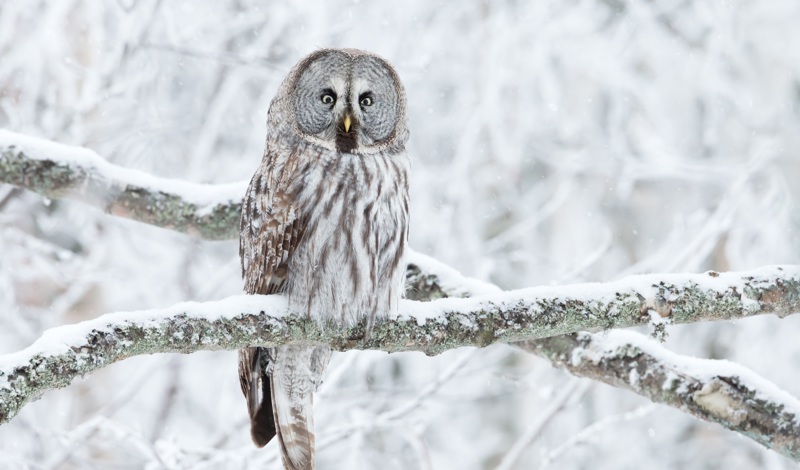
Did You Know? Fun Owl Facts
What do owls eat?
Lapland owls mainly feed on small mammals such as squirrels, rabbits and moles, with small rodents making up about 80-90% of their diet.
Approach with caution
Their nests can be found in forests with large clearings nearby for hunting. They tear food into very small pieces to feed their hungry chicks and will aggressively defend their nest and young. Sometimes they will drive off predators as large as bears!
They’re a hoot
Their most familiar call is a soft, low-pitched hoot which is repeated every 15-30 seconds.
Saimaa Ringed Seals
Finland is home to the rarest seals in the world, the Saimaa Ringed Seal. This ice-loving animal can only be spotted in Lake Saimaa, where it became isolated from other animals at the end of the Ice Age. Around 410 of them remain in Lake Saimaa. Sadly, they are very endangered, with not many left out in the wild.
Did You Know? Fun Seal Facts
How long can a seal hold its breath underwater?
Seals will typically dive for three minutes at a time but they can stay submerged for as long as 30 minutes!
They are believed to be as intelligent as a dog
Recent studies have shown that Seals are as smart as dogs…if not smarter!
Fish is their food of choice
They feed mainly on small fish - an adult seal will eat about 1,000 kilos of fish a year!
They love to play
You may spot the mothers playing in the water with their pups.
Their fur is unique
Each seal has a unique fur pattern by which it can be identified - just like a human fingerprint.
Wolves
Wolves are rarely spotted in Lapland - this amazing animal is very endangered and hard to find. They move in large packs and don’t tend to venture too close to inhabited areas. You might be lucky and spot on in the distance - get those binoculars out!
These arctic animals have an excellent sense of hearing and smell. They also communicate with one another using posture, facial expressions, scent and howling calls. They mainly move around during the twilight hours and can move over tens of kilometres in a single day.
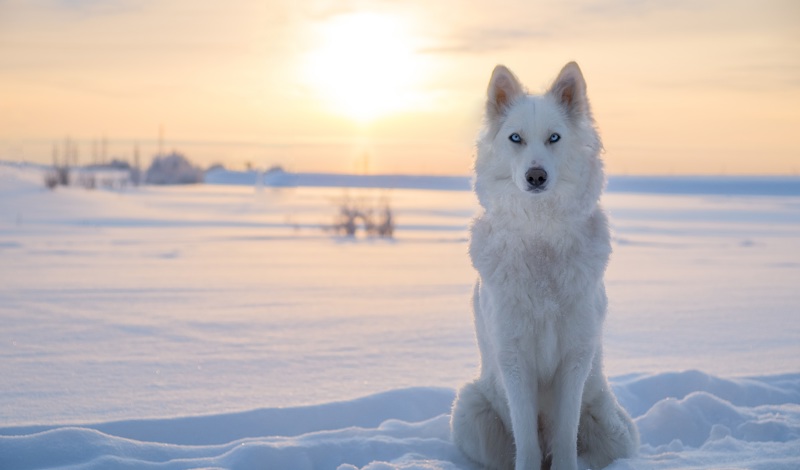
Did You Know? Fun Wolf facts
Wolves are the largest of the canines
They are the largest member of the dog family living in the wilderness. The length of the body is 100-140 cm, the tail is 35-50 cm. The colour of their coat is mainly a yellowish-grey, but there can be variations.
They are pack animals
They hunt in family packs and like to eat reindeer and elk.
In the Sami language the name for wolf is, ‘gumpe.’
Throughout history, the Sami people have been cautious of the wolves due to them killing their herds of reindeer. They have an ancient story about the wolves using magic as a means to make the Sami people fall asleep.
The Arctic Fox
This beautiful animal has thick fur which changes colour from brown in the summer to white in the winter. They are a fluffy bundle of cuteness that is often camouflaged against the snow so keep your eyes peeled.
They are much smaller than other members of the fox family, which helps to keep them warm in the harsh arctic climate. The thickness of their fur increases for the winter season, helping to maintain their core body temperature. Unlike the brown bear, they don’t have to hibernate during the winter. This is down to their ability to physically adapt to the winter.
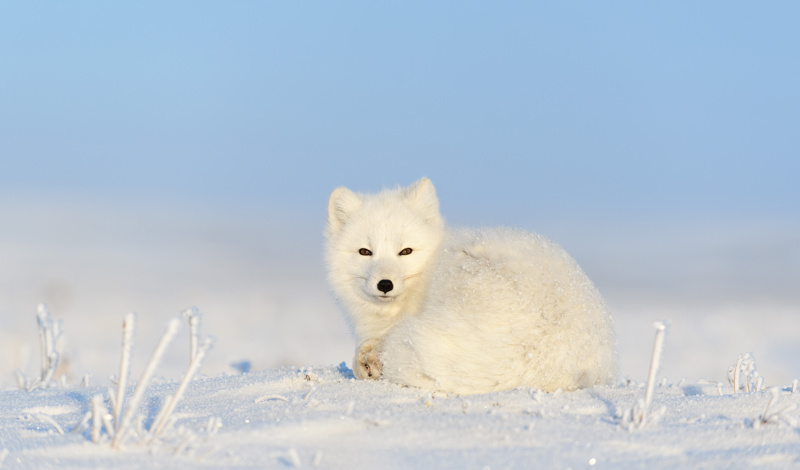
Did You Know? Fun Arctic Fox Facts
Masters of hiding
They live in large dens with complex tunnels so these very shy arctic animals can be very hard to spot.
They are clever and adaptable creatures
Underneath their fur coats, they have dark coloured skin. Darker skin colour is much better at absorbing and retaining heat which is a major advantage in the frozen arctic.
They don’t live that long
They usually only live up to 3-4 years in the wild, however the survival rate will vary depending on the region and food availability.
Wildlife You Won’t See in Lapland
The Arctic is huge and there are many animals you won’t get to see in Lapland. Polar bears for example, are marine animals and Finland has no direct connection to the Arctic Ocean. The only polar bear that can be found in Finland is at the Ranua Wildlife Park.
You won’t come across any penguins either - you’ve got the wrong Pole. You can find these little arctic creatures on the other side of the planet.
More Lapland inspiration
Discover our Santa's Lapland experiences
No one knows how to make Christmas more magical
Flights, transfers, half-board accommodation, a fun-filled activity trip and snowsuits are all included.
Seeing Lapland in the snow is all part of the experience, so if we decide that there’s not enough snow, you can change your travel dates, within the same season, or get a full refund.
A remote spot in the far north of Finland, 200km above the Arctic Circle among the snowy trees of Saariselkä.





